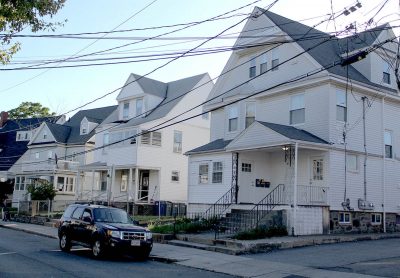
Boston is becoming one of the priciest cities in the United States to live in and is among the top 20 cities where the middle class cannot afford a home, according to a recent study.
The report, by 24/7 Wall Street, found that around 69 percent of housing units constructed in Boston between 2011 and 2014 were considered high-end, and only 19 percent were considered affordable to the average resident. Additionally, almost half of all middle-class Boston households spend 30 percent or more of their salaries on housing.
The Massachusetts Smart Growth Alliance is one of many organizations working to combat the worsening housing affordability crisis in the city. Larry Field, the deputy director, said this issue has been ongoing for decades.
“The issue began 30 years ago when housing production, especially multi-family housing, went down,” Field said. “We have not been producing enough housing, and the significant effects of that started to be felt 20 years ago when housing prices and rent started to rise.”
The MSGA advocates for smart growth policy and development in dense locations where there is access to public transit, city centers and jobs, Field said. The agency’s current “Great Neighborhoods” campaign works to increase housing production and provide tools for municipalities to reach their production goals.
Field said the greatest obstacle to overcoming the housing shortage is zoning laws, so the MSGA has been pushing for reform. MSGA statistics show that just 10 communities across the state produced 62 percent of building permits for multi-family homes in Massachusetts from 2010 to 2016, he said. Boston produced 37 percent.
The initiative, filed in January 2017, failed to be voted on before the legislature adjourned to go campaign for midterms, Field explained.
“We did not see a vote on our proposal, nor any others, so there has been no progress this term on this bill,” he said. “We are evaluating what to do for the next legislative term.”
The City of Boston is estimated to reach a population count of more than 700,000 residents by 2030, according to the City’s Boston 2030 plan.
Mayor Martin Walsh announced his comprehensive plan to deal with this growth, “Housing a Changing City: Boston 2030,” in 2014, which has the goal of creating 53,000 new units of housing by 2030.
The new units will include units at a variety of income levels, including 44,000 units for members of the workforce, 5,000 units for senior citizens and an additional 4,000 units to improve market stability.
The plan also includes a goal of creating 16,000 new beds in undergraduate dormitories by 2030, which will reduce the number of undergraduates in private housing by an estimated 50 percent. Of the 16,000 stated goal, 5,898 units have been permitted thus far.
Jason Desrosier, manager of Community Building and Engagement at the Allston Brighton Community Development Corporation, said students living in private housing have had a significant impact on the city.
“Starting in 1980, some of the issues we saw in the neighborhood had to do with the institutions — BU, BC and Harvard,” Desrosier said. “As those institutions started to expand, it created a shortage of affordable housing. I think, for a long time [before that], Allston and Brighton were some of the more affordable parts of the city.”
Today the Allston Brighton CDC provides about 505 affordable housing units for lower to moderate income households, Desrosier said. Those who qualify for these units are considered under 80 percent of the median local income. However, there is currently a three to five year waitlist for these affordable units.
Desrosier said the Allston Brighton CDC does some development work, but they mostly focus on acquisition of local properties to ensure that the units stay at an affordable price.
“You have units in Allston which were two families or triple-deckers, which were the affordable housing model,” Desrosier said. “Now, students and young people are living [there], and landlords can double or triple up [the rent]. It’s keeping families out of [that] housing.” Anthony Gardella, of Brighton, said that from personal experience, he knows this issue is being mirrored in the Fenway area.
“I volunteered at the Fenway Community Center for a while, and there was a bunch of pushback on the students,” the 26-year-old said. “If you talk to community groups and they are so against [it], they want to make sure that students are separate from their [housing options].”
Gardella said he thought the City’s efforts to create more on-campus options would help with this problem.
“I know BU tried to buy out some more property so they could bring more students on campus,” Gardella said. “I think Northeastern did too. It was so expensive to live on campus that I had to move off campus and ended up living off campus for three years. If universities could make it easier to live on campus, I think that would help the city of Boston.”























































































































Ross Duncan-Brown • Sep 13, 2018 at 4:21 pm
Good to see you commenting on this issue!